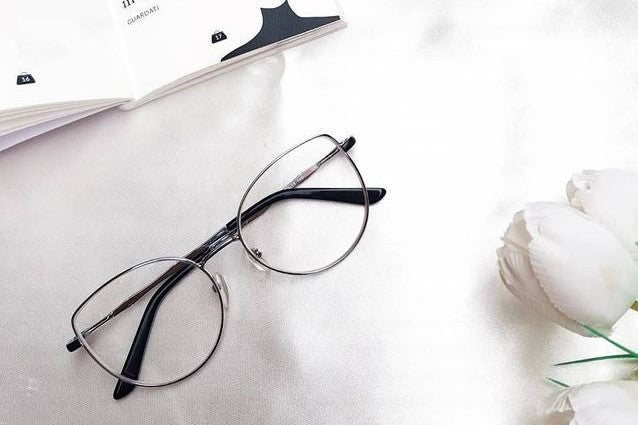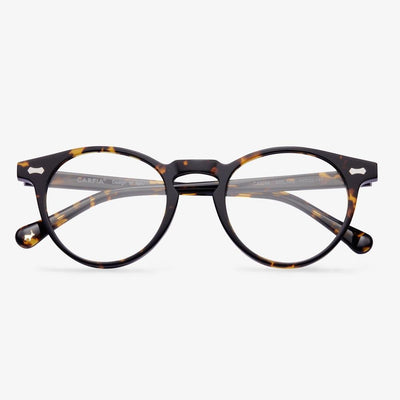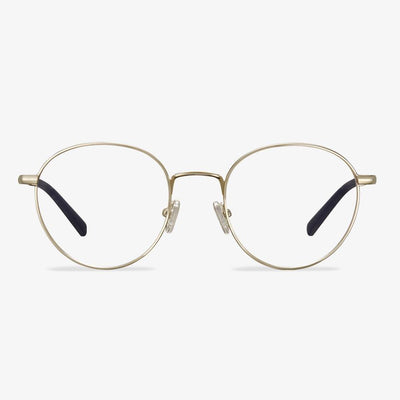What are the origins of saddle bridge glasses?
Rimless glasses were introduced in 1880 and were popular until the 1950s. Rimless glasses made in 1880 and 1920 lacked a nose pad. Instead, they use a saddle bridge, so they were sometimes called saddle bridge glasses. Horses are the main means of transportation. Early rimless saddle glasses were designed to be close to the face. Rimless glasses with nose pads were introduced in 1921. The nose pad keeps the glasses farther away from the face. In addition, frames can be made much larger.
Benefits of Progressive Lenses
Progressive lenses are different from traditional reading glasses and bifocal glasses in that bifocal reading glasses have to constantly change the focal length, causing fatigue. And there is no clear dividing line between the two focal lengths. They are more comfortable, more beautiful. When you see far or see near, a pair of glasses can be done, so they become the best choice for old people little by little.
Progressive lenses allow multiple fields of view to be merged into a single lens with no discernible difference between the fields themselves. Degrees of the lens vary gradually from far to medium to your full reading. This is why progressive lenses are often regarded as no-line bifocals or trifocal points.
Why are eyeglass frames are so expensive?
Good frames and bad frames are very different just in how they feel. The bigger the brand company, the more money it invests in the design, research and development, production equipment, and equipment of the lens frame every year, so as to improve the wearing comfort and improve the combination and precision of the lens. Even if for the general assembly line, the processing process is also very complicated. The most expensive things to make by hand are labor and time.
An oval face fits all frames.
It is still expensive to get glasses, so it is best to know what shape you are suitable for before getting glasses. A suitable pair of glasses frame, not only can make the vision more clear but can increase the appearance. There are different tips and methods for choosing glasses for different face types. Glasses can not only assist myopia, but play the role of modifying the face, so how should different face types choose suitable glasses?
If you have an oval face, you should be lucky to have a uniform shape that allows you to pull off all frames. The widest part of this face is located in the front part and moves smoothly to the forehead and the sides of the chin. Due to uniform proportion, the face has no special defect to cover.
How to protect rimless glasses?
With the continuous improvement of people's living standards, many people begin to pay attention to their quality of life. In the past, many people thought that wearing glasses was for correcting eyesight glasses, but now more and more people use them for decoration, and rimless glasses meet the needs of consumers. Because of its light structure, giving people a sense of fashion, so it is loved by many business people. So how do you protect your rimless glasses?
Orthokeratology
Orthokeratology is a type of surgery that corrects the eyesight of the eye. It improves daytime vision through a rigid, highly breathable contact lens. Orthokeratology is the use of the principle of reverse geometry. Change the curvature of the cornea with orthokeratology lenses, to achieve the effect of non-surgical vision correction and prevention of myopia.
Although it can effectively improve vision, it still cannot solve the sequelae of high myopia, like macular degeneration and retinal detachment. Orthokeratology lenses were initially used by patients who wanted to temporarily go without glasses, so the websites of orthokeratology lenses in the United States continue to sell them primarily to young people and people who love sports.
How to Choose Reading Glasses?
Find the right power. When choosing reading glasses, finding the right power would be the most important thing. All reading glasses will have signs or stickers indicating their power. In most cases, they will range from +1 to +4 diopter, in increments of +0.25. So, when choosing reading glasses, try the lowest power first.
Test-drive the glasses. If you have brought reading material with you, try reading it at a comfortable length. If you hold the material too far out to be able to read it, you should increase the power. Keep testing the differences powers until can read clearly at the distance that’s more comfortable for you.











































